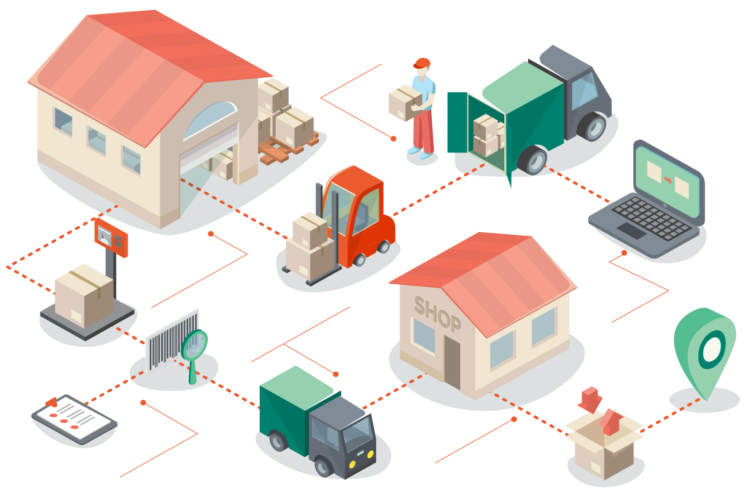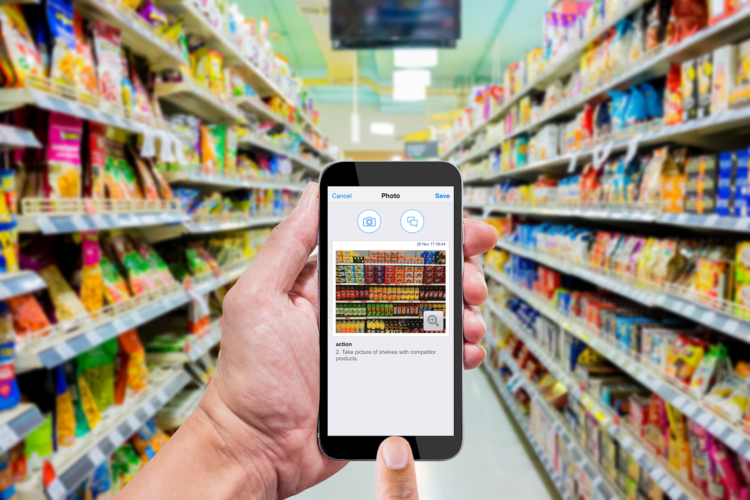In this fast-paced era, television and newspaper outlets, blogs, and even social media would often show advancements in the business world. Everything has become digital, and organizations, corporations, or even small businesses have to choose from a sink-or-swim situation – whether to stick to the traditional operation or adapt to technology.
Different automated systems have been introduced to make people’s lives better; from smart homes to software that can enhance business operations, everything now functions digitally. As a business owner, if you would like to improve the way your enterprise operates, perhaps you should give automated systems a try.
The software you can consider looking into is a warehouse/merchandising tracking system. But first, you should know what this is about.
Page Contents
What is a Warehouse Management System?

A warehouse management system (WMS) is part and parcel of an inventory management system, allowing companies to keep track of stocks going in and out of their warehouses. In addition, warehouse management systems help ensure that enough stocks are kept on hand for retailers that keep their goods in a specific warehouse.
Typically, warehouses are large buildings, keeping storage of merchandise for different retailers. Since there is so much space and stocks to look into, looking for specific goods might become difficult and arduous. A warehouse management system provides a way of tracking your inventory and makes finding specific items more manageable.
There are many automated warehouse systems out in the market, but one of the highly recommended advanced warehouse management software for distribution, e-commerce, and retail is Fishbowl Warehouse (FBW).
With its powerful automation platform, FBW provides features that provide top-of-the-notch service for your inventory and management needs, such as:
- Getting real-time inventory updates so you would know how much stocks are still on hand
- Effective in avoiding stockouts by setting reorder points on all stored products
- Eliminate data entry errors through scanning barcodes when reordering
- Fishbowl can easily be integrated with eCommerce tools and online shopping carts
- Fishbowl also integrates with Quickbooks, Xero, Salesforce, UPS Ready, and many others.
How about Merchandising Tracking Software? How is it different from a Warehouse Management System?

Source: visitbasis.wordpress.com
Merchandising tracking software, on the other hand, focuses more on managing manufacturing processes. Fishbowl also provides its system, Fishbowl Merchandising (FBM), and helps businesses manage their inventory smoothly while increasing efficiency and saving money. Some of its features include:
- Generating work orders for assembly, disassembly, replacement and repair, and other jobs
- Save previous work orders and warehouse receipts for future transactions
- Streamline manufacturing process for time efficiency and saving money
- Track your inventory across all your manufacturing processes up to the delivery of your goods.
Both warehouse and merchandising tracking software are under the umbrella of Inventory Management Systems and equally helpful in optimizing efficient and automated service for your business. However, if you as a business owner is still contemplating on whether or not to give this system a try, here are some reasons to enlighten you to use this software:
1. Efficiency and Productivity in Your Business Operation
Keeping stock within your warehouse would entail time and money, and as a business owner, you would want to spend less but not compromise marginal revenue. You would want to keep your cash flow incoming rather than having it go outward as much as possible.
With warehouse and merchandising tracking software, analytics and reports can be sourced in one standard system. Gone are the days of numerous paperwork that only ends up getting jumbled and even lost as you try to sort through your inventory. You can access all the information you need with one click of a finger.
You can even check through the software any market trend by reviewing over your inventory what goods have been sellable at a certain period. Monitoring what merchandise to keep more in stock would not only lessen expenses, it might even upscale your profits.
2. Centralized Customer Service and Management

Source: helpscout.com
Since your business processes are streamlined, from order to delivery, queries from both retailers or the general purchasing public can be easily manageable if it is all automated through a system.
Also, with a uniform system through a warehouse and merchandising tracking system, you can assure your clients that the packaging and delivery of orders can arrive within a time frame as requests can be fulfilled immediately.
3. Minimize Operational Costs, Maximize Your Sales Profit
Managing orders across your sales channels might feel like a chaotic and crazy task, especially during the holiday season. In addition, keeping stock during the high-demand sale seasons may also take a hit on your expenses as you would need to spend for storage for insurance, storage fees, taxes, security, etc.
With an effective inventory system for your warehouse and merchandising processes, as goods are packed and delivered quicker, productivity levels are also increased. The more productivity enhanced, the more money saved and profit earned. Time is even optimized, hence more space to accept orders, which means more earnings for your business.
4. Improve Labor Utilization

Source: hubspot.net
Instead of putting more burden on your employees to keep track of every step in the business processes – from recording inventory to shipping out goods for your client, you can let the software do the dirty work and increase labor productivity.
A warehouse and merchandising tracking system is not only limited to recording inventory and sales. It can also monitor employee tasks, efficiently delegate the job, and set up schedules. As a result, you no longer need to double-check on functions that have already been completed and delivered through proper work assignments.
5. Real-Time Information Management
As you feed your warehouse and merchandise tracking software all the data in line with your business processes, such as sales records, merchandisers information, orders and corresponding deliveries, the system adapts and gives you a real time report on how your business is doing.
You can easily access reports regarding feedback from your merchandisers and retailers by sending surveys, which answers your software will receive. Through this, you can keep track of things you can improve on to provide better service and be aware of the demands from the market.
Takeaway
As technology advances and systems move forward, perhaps this is a sign to upgrade your inventory management process and have your business take off. All it takes is the will to adapt to change and a mindset for improvement. The choice is yours.





